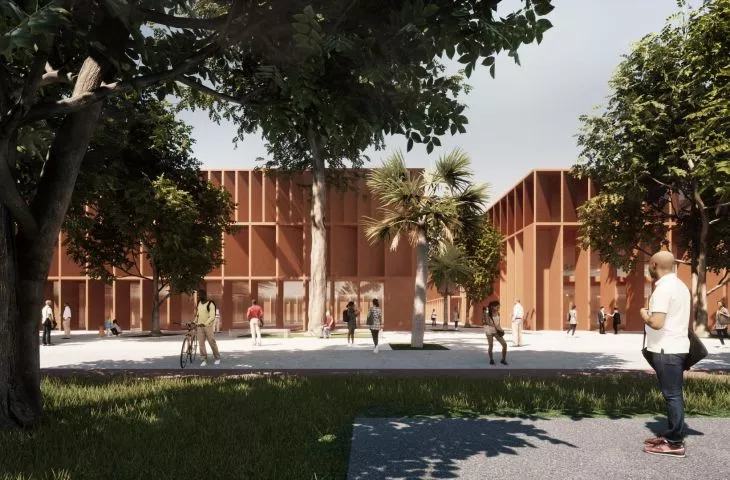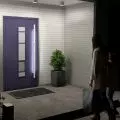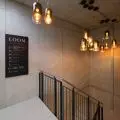New Kalemie
New Kalemie will be located on a relatively flat area situated between the shore of Lake Tanganyika and the road connecting the town to Mama Kasangi village. The new town will be naturally divided into three parts by rivers flowing into the lake. The floodplains of the rivers will be used by residents as farmland and, in the future, as recreational areas.
New Kalemie, master plan
© OPEN architects
Decentralization of Kalemie is important in the architects' concept, the city has been divided into forty sections -MAKRO VISIONS. The basic section of about one hundred hectares is intended for about twenty, twenty-five thousand residents. The individual units are to be self-sufficient, with their own schools, health centers, market, cultural centers, religious centers, places of work and leisure. According to the assumption, the longest time needed to reach the destination on foot for each resident should be about 10,15 minutes. Compositionally, the MAKRO VILLAGES correspond to the macro-scale plan. Each section is divided by a green belt, which will perform a similar function to that of river deltas.
MAKRO WIOSKA
© OPEN architects
Decentralization, the project's authors write, should anticipate structural or social changes and allow for flexible adjustments within each section.
Therefore, it seems appropriate to lay out a new Kalemie composed of MAKRO VILLAGES, and in the future of MIKRO CITIES, interconnected compositionally, communicatively and administratively into one organism, the designers add.
In each section (the sections will be divided into communities of five to six thousand, to allow for the building of a local identity), a diversity of development should be guaranteed, which will allow for the sustainable development of the city, without divisions into neighborhoods of inferior and superior status. The architects proposed an exemplary parcelization and indicated possible types of development including houses adapted to the function of small farms for residents who still make their living from agriculture, terraced , semi-detached, single-family housing, and multi-family housing located along the main streets.
Atrial developments were considered to be the most efficient and economical, harmonizing with the local climate by offering shaded courtyards, sun control and intimacy for residents. With a relatively small area of the building plot, it is possible to obtain buildings with properly resolved functions and without the need for costly fences.
© OPEN architects
In the designs of the houses, the architects pay attention to the consideration of climatic and economic factors. The proposed solutions for buildings with different functions are united by the vision of a coherent architecture with local features, using currently available technologies and with low implementation costs.
In addition to the MAKRO VILLAGES, functional complexes with supra-local functions are planned in the city: A government district (housing an expanded administrative structure located at the end of the avenue leading from the existing airport), a sports district (located adjacent to the stadium built last year), a university campus (to be located in the heart of the new Kalemie, adjacent to the green areas of the Lugumba River) and a market located in the center of the city. Also taken into account is the need for future construction of facilities such as large cultural and social centers, for which land reserves have been provided in the center of the new city, which should remain green areas until their potential development.
space has been provided in each quarter for the location of schools
© OPEN architects
In the districts located directly on the shoreline, the development of a tourist base is possible, while industry will be moved far outside the city.

























































































































